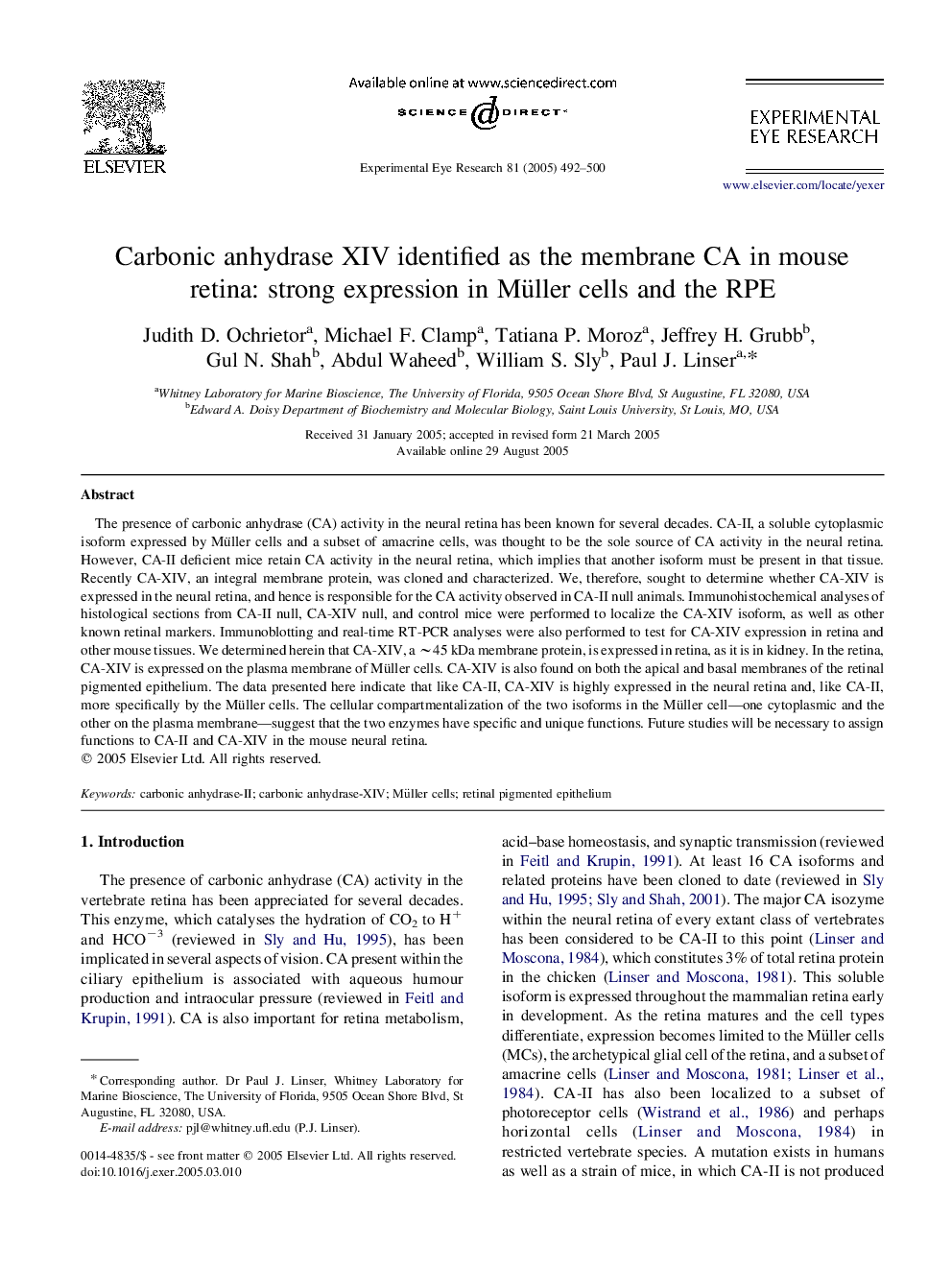| Article ID | Journal | Published Year | Pages | File Type |
|---|---|---|---|---|
| 9341452 | Experimental Eye Research | 2005 | 9 Pages |
Abstract
The presence of carbonic anhydrase (CA) activity in the neural retina has been known for several decades. CA-II, a soluble cytoplasmic isoform expressed by Müller cells and a subset of amacrine cells, was thought to be the sole source of CA activity in the neural retina. However, CA-II deficient mice retain CA activity in the neural retina, which implies that another isoform must be present in that tissue. Recently CA-XIV, an integral membrane protein, was cloned and characterized. We, therefore, sought to determine whether CA-XIV is expressed in the neural retina, and hence is responsible for the CA activity observed in CA-II null animals. Immunohistochemical analyses of histological sections from CA-II null, CA-XIV null, and control mice were performed to localize the CA-XIV isoform, as well as other known retinal markers. Immunoblotting and real-time RT-PCR analyses were also performed to test for CA-XIV expression in retina and other mouse tissues. We determined herein that CA-XIV, a â¼45Â kDa membrane protein, is expressed in retina, as it is in kidney. In the retina, CA-XIV is expressed on the plasma membrane of Müller cells. CA-XIV is also found on both the apical and basal membranes of the retinal pigmented epithelium. The data presented here indicate that like CA-II, CA-XIV is highly expressed in the neural retina and, like CA-II, more specifically by the Müller cells. The cellular compartmentalization of the two isoforms in the Müller cell-one cytoplasmic and the other on the plasma membrane-suggest that the two enzymes have specific and unique functions. Future studies will be necessary to assign functions to CA-II and CA-XIV in the mouse neural retina.
Related Topics
Life Sciences
Immunology and Microbiology
Immunology and Microbiology (General)
Authors
Judith D. Ochrietor, Michael F. Clamp, Tatiana P. Moroz, Jeffrey H. Grubb, Gul N. Shah, Abdul Waheed, William S. Sly, Paul J. Linser,
